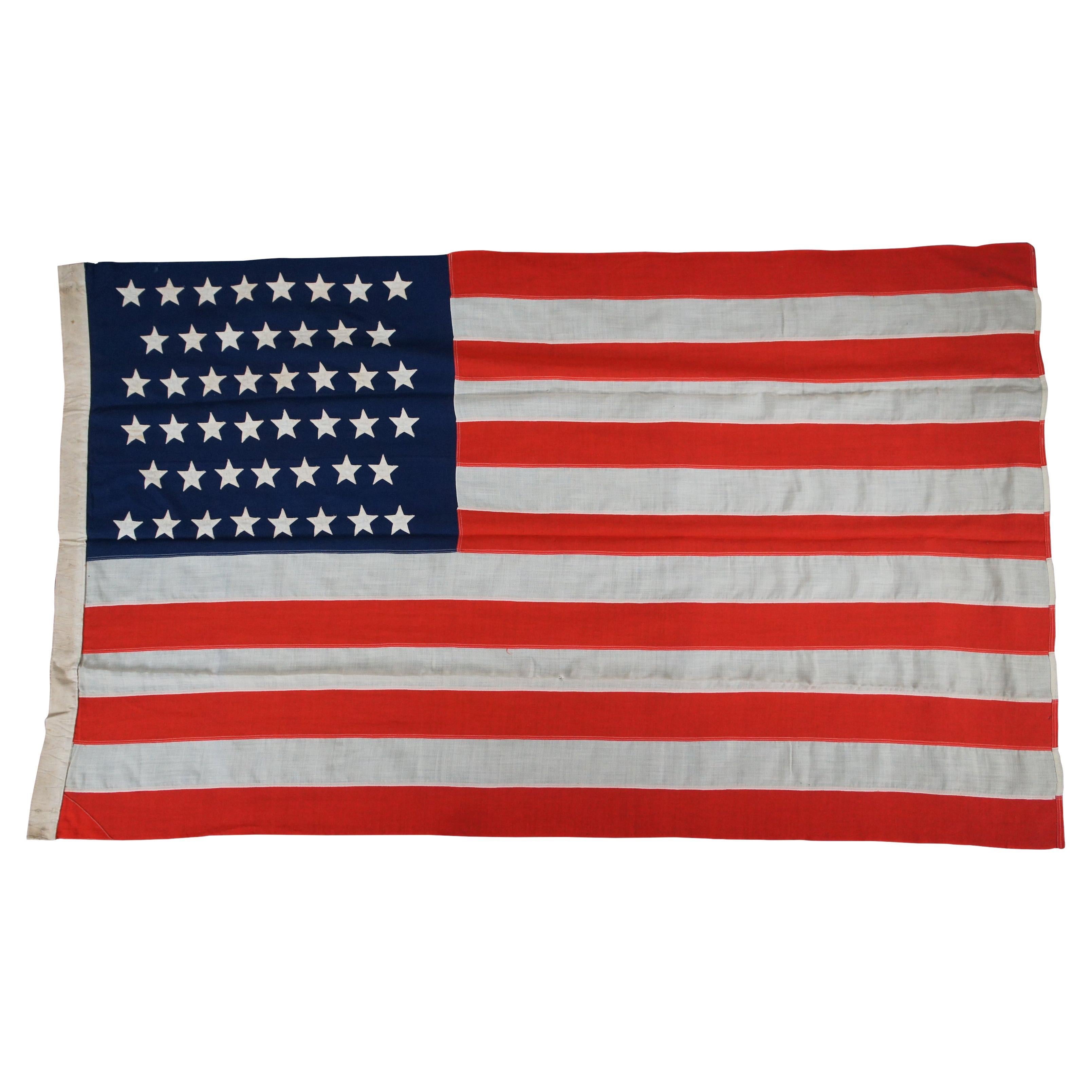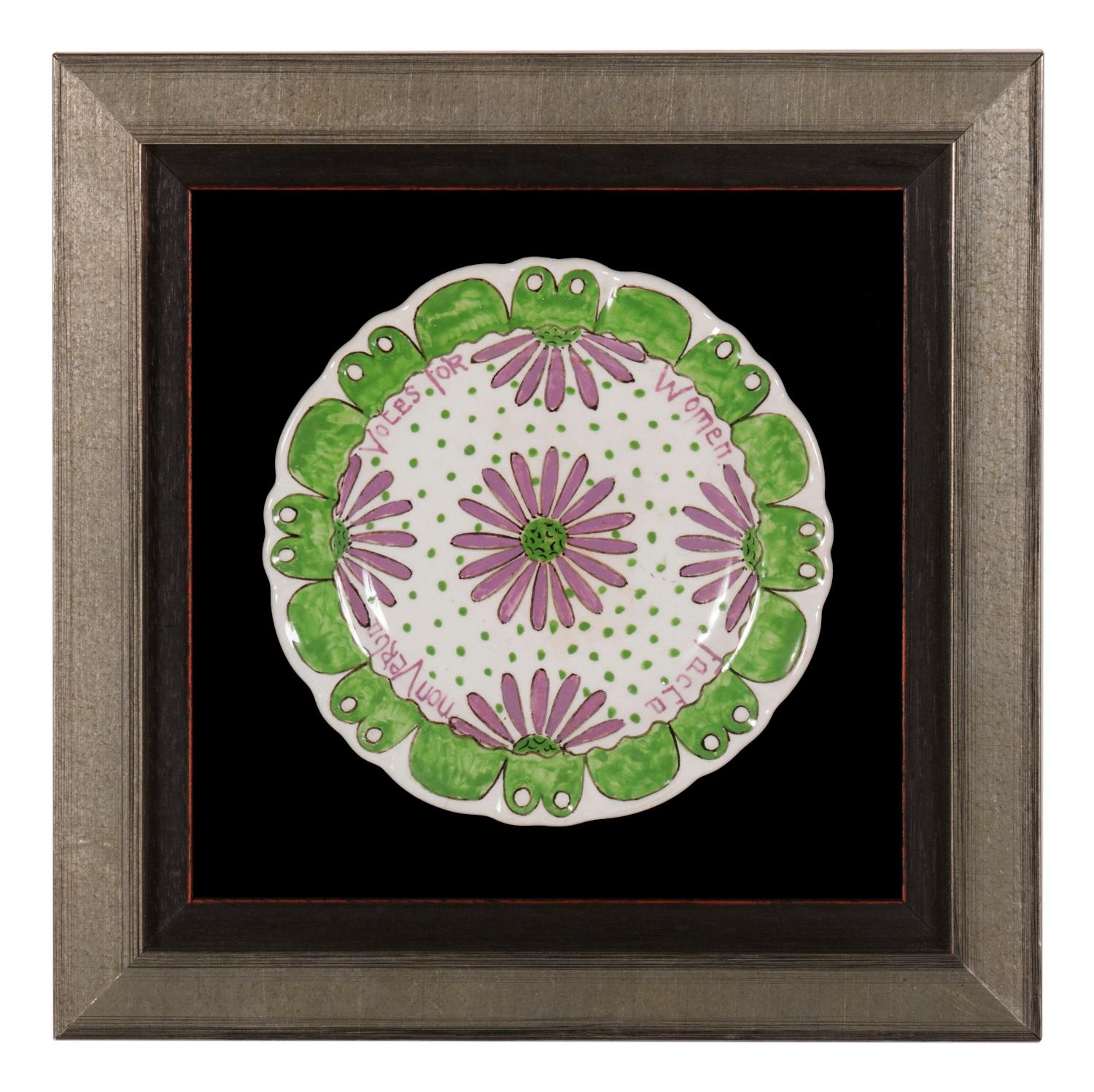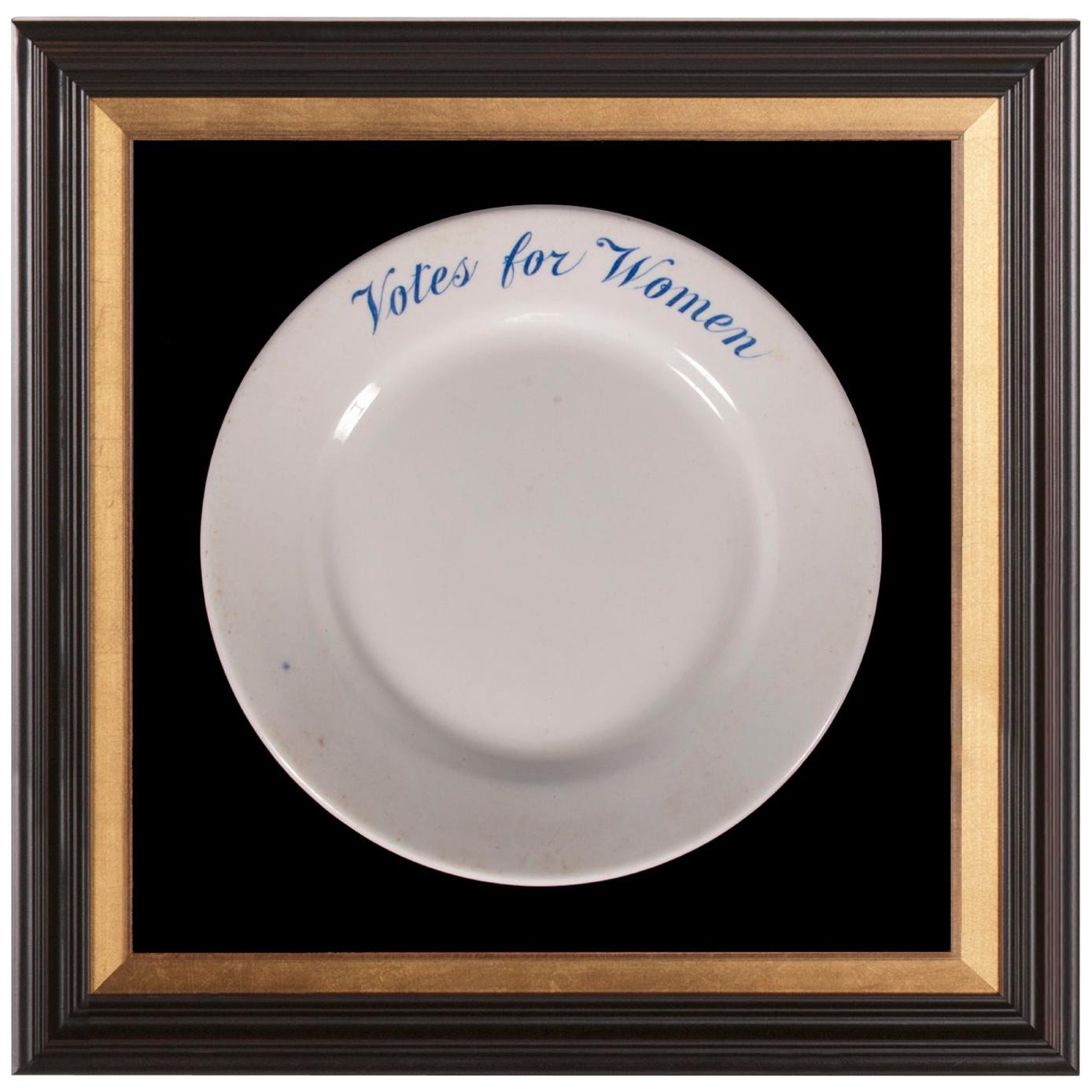Items Similar to President Dwight D. Eisenhower Commemorative Ceramic Plate
Want more images or videos?
Request additional images or videos from the seller
1 of 7
President Dwight D. Eisenhower Commemorative Ceramic Plate
About the Item
A round ceramic commemorative plate of President Dwight Eisenhower. The plate is circular, with gold detail around the edges, and a portrait of President Eisenhower in the center. Below, it reads "Dwight D. Eisenhower 1890-1969
Dimensions:
7.25" diameter
.75" tall
Weight:
.5 lbs.
- Dimensions:Height: 0.75 in (1.91 cm)Diameter: 7.25 in (18.42 cm)
- Style:American Classical (In the Style Of)
- Materials and Techniques:
- Place of Origin:
- Period:
- Date of Manufacture:20th Century
- Condition:Wear consistent with age and use. Consistent with age and use.
- Seller Location:Oklahoma City, OK
- Reference Number:1stDibs: LU3382317345332
About the Seller
4.9
Vetted Seller
These experienced sellers undergo a comprehensive evaluation by our team of in-house experts.
1stDibs seller since 2018
578 sales on 1stDibs
Typical response time: <1 hour
- ShippingRetrieving quote...Ships From: Oklahoma City, OK
- Return PolicyThis item cannot be returned.
More From This SellerView All
- Round Commemorative Plate of President Nixon 37th PresidentLocated in Oklahoma City, OKA circular cream round commemorative plate of President Nixon. Reads Richard M. Nixon 37th President. Gold detail around the edges, with the image of P...Category
20th Century North American American Classical Historical Memorabilia
MaterialsCeramic
- Antique Federal Eagle American 50 Star Flag with Brass Eagle Pole, 19th CenturyLocated in Oklahoma City, OKMonumental 50 star American Flag with antique Federal Eagle brass and wood pole. A patriotic piece suitable for any home. This set includes both ...Category
Antique 19th Century American Federal Political and Patriotic Memorabilia
MaterialsBrass, Bronze
- Vintage Engraved Oneida Silver Plate Trophy Plates or Trays - 1979 A PairBy OneidaLocated in Oklahoma City, OKA pair of small round engraved silver plate trays by Oneida. Each plate is round with a lovely faux ribbon or rope detail around the edge. The center of each piece is engraved with "C.P.C. '79". We aren't sure what the engraving means, however, we believe it might be equestrian-related. We sourced an enormous amount similar to these earlier in the year which were Horse Race trophy...Category
Vintage 1970s American American Classical Sports Equipment and Memorabilia
MaterialsSilver Plate
- Vintage Mid-Century Modern Life Magazine President Johnson, December 1964Located in Oklahoma City, OKVintage LIFE Magazine from December 1963. This piece is in a wonderful vintage condition consistent with age and use. We think this would be a great gift for the political junkie per...Category
Mid-20th Century American Mid-Century Modern Historical Memorabilia
MaterialsPaper
- Nautical Sailboat or Yacht Model in Blue and White with Painted Wood Body, 1930sLocated in Oklahoma City, OKBeautiful model sailboat or yacht created from wood, brass, and canvas. The body is painted in a deep blue at the bottom with white edges. A brass propeller sits underneath. All on a...Category
20th Century American American Classical Nautical Objects
MaterialsMetal
- Gold and Pink Floral Painted Ceramic Plate with Scalloped EdgesLocated in Oklahoma City, OKBeautiful floral plate with scalloped edges. The piece features roses and other flora throughout and gold designs around the rim and in center. The bottom reads: Gold Castle made in Occupied Japan...Category
Mid-20th Century Japanese American Classical Dinner Plates
MaterialsCeramic, Porcelain
You May Also Like
- Rare Monumental 1890 Antique 42 Star United States of America FlagLocated in Dayton, OHMonumental fifteen foot 42 star American flag, circa 1889-1890. The 42-star flag is rare because only a limited number of 42-star flags were produced after Washington became a state on Nov. 11, 1889. But it takes a more intimate knowledge of flag trivia to know just why it happened this way. White stars are added to the blue field of the star-spangled banner on the Fourth of July after a state is admitted to the union. In the fall of 1889, several western territories became states. Dakota was admitted, and then split into North and South Dakota, on Nov. 2, 1889, which made them state and star numbers 39 and 40. Montana was named the 41st state on Nov. 8, followed by Washington, on Nov. 11. Only a few flag manufacturers began producing 42-star flags before the official addition of the 42nd star on July 4, 1890. Those who tried to jump the gun by being the first to produce an up-to-date flag were surprised when Idaho was admitted to the United States on July 3...Category
Antique 1890s American Classical Historical Memorabilia
MaterialsCotton
- Antique 46 Star WMH Horstmann Company United States of America Flag 83"By HorstmannLocated in Dayton, OHAntique forty six star large wool American flag by Horstmann Company, circa 1908-1912. Horstmann firm was founded by William H. Horstmann (1785-1850), who had immigrated to Philadelphia from Germany. Horstmann bought out a local swordmaker in 1828 and thereafter entered the military goods field. The firm benefitted from the Civil War, becoming the largest military goods supplier in the nation by 1864. WILLIAM H. HORSTMANN & SONS, Manufacturers of Dress Trimmings and Military Goods. 5th & Cherry Streets, Philadelphia, PA. This house was founded, in 1815, by William H. Horstmann, a native of Cassel, in Germany. He had learned the trade of silk-weaving in France, and, emigrating to the United States in the above-mentioned year, established himself in Philadelphia as a manufacturer of fringe, laces and trimmings of various kinds. He married the daughter of Frederick Hoeckly, a German settler in Philadelphia, and also a manufacturer of fringe, coach-lace and tassels. He devised several improvements in this trade, especially by introducing varieties in the styles and patterns of this class of goods, there being at that time only two patterns used in the trade, which were known as the Jefferson pattern and the Monroe pattern. In 1824, he introduced into this country from Germany the use of plaiting or braiding machines, and about the same time he was the first to introduce into this country the use of the Jacquard loom, for weaving patterns in textile fabrics. His location was in the first instance at No. 50 North Third street, but within a short time he removed to a store next to the Harp and Crown tavern, afterwards known as the City hotel, and continued his business within a short distance of this point for many years. In 1828, he commenced the manufacture of military trimmings as a special department, and this branch has grown to most important proportions, Horstmann's military goods being in demand throughout time country. The firm have also executed large Government contracts in this line for the War and Navy Departments. In 1831, he established a branch house in New York city, and about the same time erected a factory at the corner of Germantown road and Columbia avenue. The factory was continued here until time erection of the extensive building at Fifth and Cherry streets, where the works, salesrooms and offices of time firm now are. This massive structure is six stories high, and extends 140 feet on Fifth street and 200 on Cherry street, and reaches back to Race street. The separate departments into which the business is divided are thirty in number. More than 1000 distinct looms and machines are in use in the building, many of them very costly and some invented and used exclusively by this firm, the motive power being supplied by a steam engine of fifty horse power. The area covered by the works is about 11,000 square feet. Time number of hands employed is very large, about 500. When the erection of a vast factory at this point was first proposed, a strong opposition was made by time holders of the neighboring property. The ancient German Lutheran Church and burying ground, since removed, stood opposite the site, and a bill was introduced into the Legislature to forbid the use of a steam engine within 100 yards of any place of worship. The interests which such a bill would have affected injuriously, especially those of several newspapers, roused a strong opposition to it, and it failed to become a law. In 1845, William H. Horstmann, the founder of the house, retired from the business, and his two sons, William and Sigmund, assumed the management and it was under their direction that the new building, above described, was erected. The goods produced by this house are of almost endless extent and variety. They include goods woven from all the various textile fibres—cotton, wool, silk, etc.—in every style, color and pattern, and are used for an infinite number of purposes. Narrow woven goods are time staple production, made up into material for dresses for both sexes, for use in daily life, and for regalia for ""societies;"" for the costumes of the stage, the upholstering of houses and of carriages, the uniforms of soldiers, together with equipments for the same, and for funeral purposes. The raw material used in the manufacture is to a great extent very costly, and their store rooms often hold as much as $200,000 worth of goods in an unworked state. There are two rooms devoted to power looms in the factory, one for coach lace and one for other styles of weaving, in which about 250 of these machines are constantly running. The braiding machines in the coach lace room are very noteworthy. The cord to be covered with braid is drawn through an opening in time middle of a flat, circular, metallic plate, about 15 inches across. Up to a point on this cord, about a foot above the plate, the threads of the braiding material converge, like the ribs of a tent-roof, and there weave in and out and out and in, as the coating of braid grows, and time covered cord rises and is wound away above. The weaving is accomplished by the motion of the spools below that carry the different threads of the braid. These spools stand in uprights, which are carried round and amongst each other in curved slots in the above-mentioned broad metallic plate. All but two of these spools run in and out among each other, with a swift, easy and intricate motion, mind so rapid that time eye can hardly follow it, while one or two special spools run steadily round and round among time twisting spools with the most extreme swiftness. Many other machines, displaying equally ingenious mechanism, are used in the factory. The various details of equipment manufactured and supplied by this house are also important, both for their number and the superior quality of the manufacture. The one article of swords may be taken as an instance. This trade grew naturally and immediately out of the established army and navy goods department of the works, it being necessary that the sword itself should be furnished together with the sword-belt and other trappings all complete. Every part of the sword and trappings, with the exception of the blade, is made on the premises. The blades are almost all imported from the ancient German sword-blade emporium of Solingen, where, it is said, swords have been made ever since the year 1147, when Count Adolphus of Berg brought home from the East and established there the business of forging Damascus blades. There is in this department a stock of some thousands of blades, of many different patterns and sizes, ready to be set and finished. Any style or sword can be had from this warehouse, from the plainest kind up to a presentation sword...Category
Vintage 1910s American Classical Political and Patriotic Memorabilia
MaterialsWool
- Dwight Eisenhower Autographed Card with Letter on Personal LetterheadLocated in Colorado Springs, COOffered is a custom signature collage, celebrating Dwight D. Eisenhower. The collage features Eisenhower's original signature on a card, which is paired with a black and white photograph of the five-star general. The signature appears in dark, bold ink "Dwight Eisenhower...Category
Vintage 1960s American Historical Memorabilia
MaterialsPaper
- Suffragette Plate, "Deeds Not Words" & "Votes for Women", The Only Known ExampleLocated in York County, PAENGLISH PORCELAIN SUFFRAGETTE PLATE WITH "DEEDS, NOT WORDS" AND "VOTES FOR WOMEN" SLOGANS, ONE-OF-A-KIND AMONG KNOWN EXAMPLES, CA 1905-1918 English porcelain plate, made for the Wo...Category
Early 20th Century English Political and Patriotic Memorabilia
MaterialsPorcelain
- Ironstone Suffragette Plate w/ Votes for Women Text, Made for Alva Belmont, 1914Located in York County, PAIRONSTONE PLATE WITH "VOTES FOR WOMEN" TEXT, MADE JOHN MADDOCK & SONS FOR SUFFRAGIST ALVA BELMONT FOR MARBLE HOUSE, HER FAMOUS ESTATE IN NEWPORT, RHODE ISLAND, CIRCA 1914: Porcelain objects related to the Suffrage movement are extremely scarce. The most celebrated of all American suffrage dinnerware consists of a service of white ironstone, commissioned by Alva Belmont,* prominent Newport, Rhode Island, socialite. Belmont was the founder of a pro-suffrage group called the Political Equality Association. According to Suffrage memorabilia expert Ken Folley, "There are at least eight different examples known in this design, including a cup and saucer, a lunch or dinner plate, a salad or bread plate, a berry bowl, a soup bowl, a celery dish...Category
Vintage 1910s English Political and Patriotic Memorabilia
MaterialsPorcelain
- 19th c Wooden Ceremonial Fraternal Masonic Crook and Metal Spear on Metal BasesLocated in Savannah, GALarge size gold gilt wooden ceremonial fraternal Masonic Crook perched on a long painted wooden pole. Supported by a decorative three-footed metal base, the gilt wood crook itself me...Category
Antique 1890s American Folk Art Historical Memorabilia
MaterialsMetal
Recently Viewed
View AllMore Ways To Browse
Vintage Weight Plates
Vintage Ceramic Collectibles
Ceramic Plates With Gold
Dwight Eisenhower
Dwight D Eisenhower
Antique Furniture In New Jersey
Antique 50s Furniture
50s Antique Furniture
Historical Documents
Vintage Stamp Machines
Vintage Stamp Machine
Early Coin Silver
Antique Badge
Ace Vintage
Union Furniture Co
Antique Maryland
Napoleonic Wars
Initial H Antique





